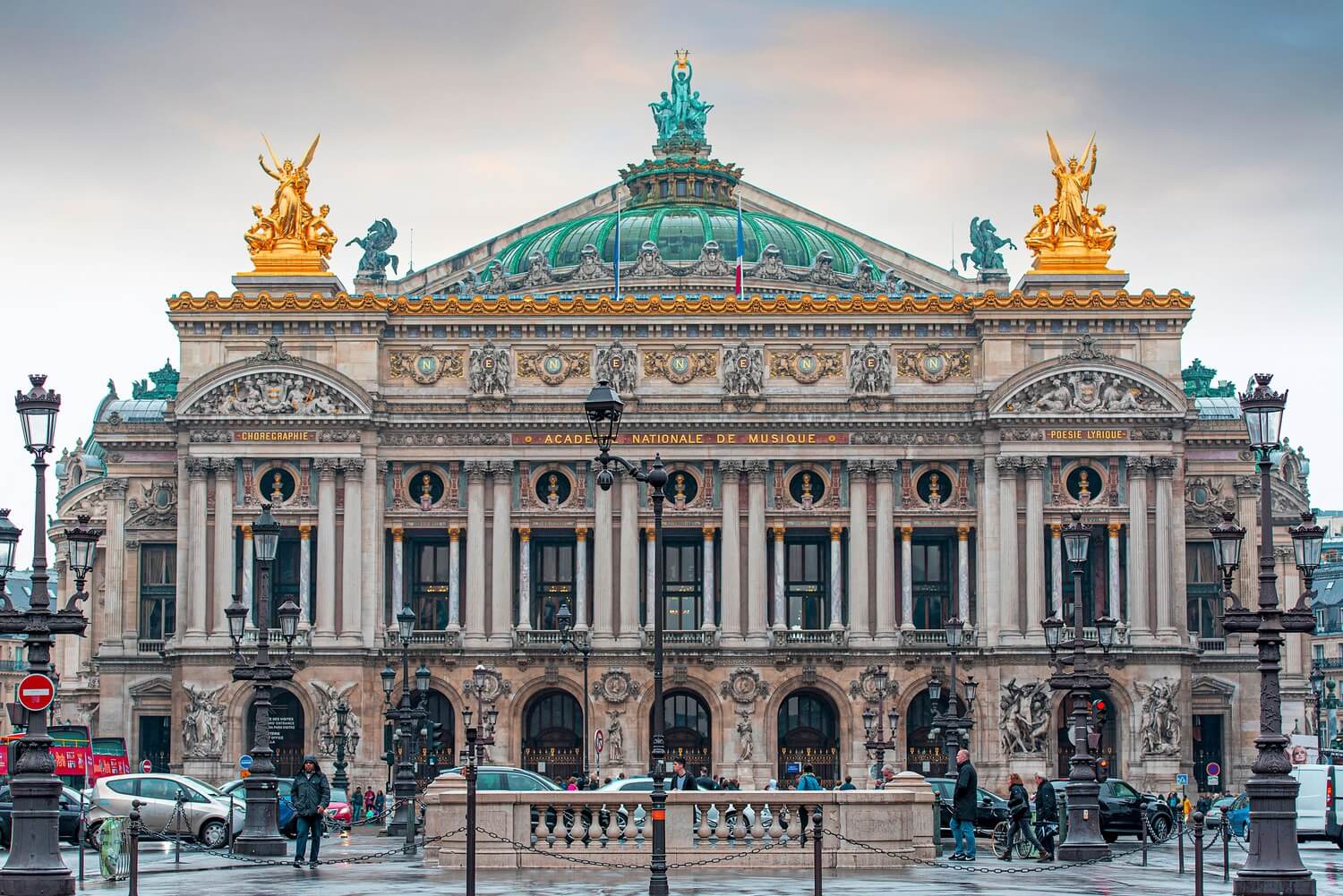Paris, the City of Light, stands as a testament to centuries of artistic brilliance, architectural innovation, and cultural richness. From medieval masterpieces to modern marvels, each landmark tells a unique story of France’s journey through history.
This comprehensive guide explores the most significant landmarks that make Paris one of the world’s most visited and cherished cities.
1. Eiffel Tower
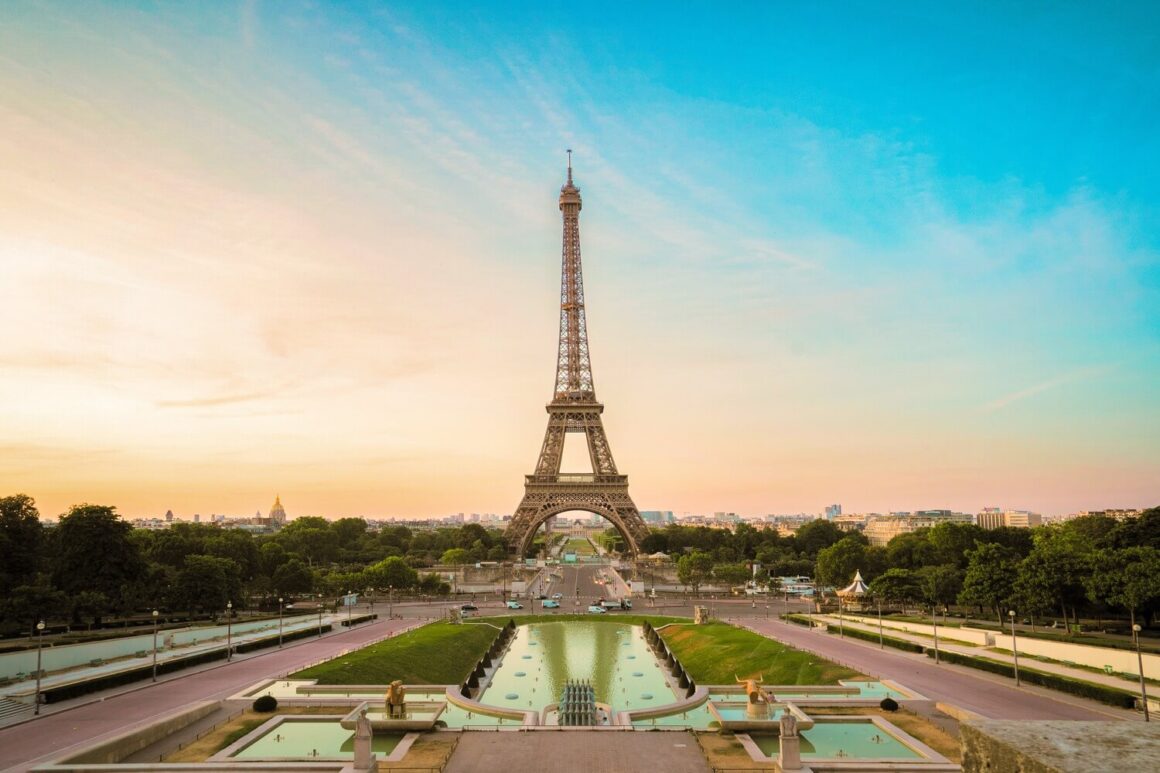
The Eiffel Tower stands as the ultimate symbol of Paris and French ingenuity. Completed in 1889 for the World’s Fair, this architectural marvel was designed by Gustave Eiffel to celebrate the centennial of the French Revolution. Rising 324 meters into the Parisian skyline, it held the title of world’s tallest man-made structure until 1930.
The tower’s revolutionary iron lattice design represented a breakthrough in engineering and architectural possibilities. Though initially met with criticism from some of Paris’s artistic elite, it has become the city’s most beloved icon. The structure features three visitor levels, each offering unique experiences. The first and second floors house restaurants where visitors can dine while enjoying spectacular views, while the top level provides an unparalleled panorama of Paris.
Beyond its role as a tourist attraction, the tower has served numerous scientific purposes throughout its history, hosting early radio experiments and meteorological observations. Today, it welcomes over 7 million visitors annually and transforms into a dazzling light show every evening, creating a magical atmosphere that captivates viewers from across the city.
2. The Louvre
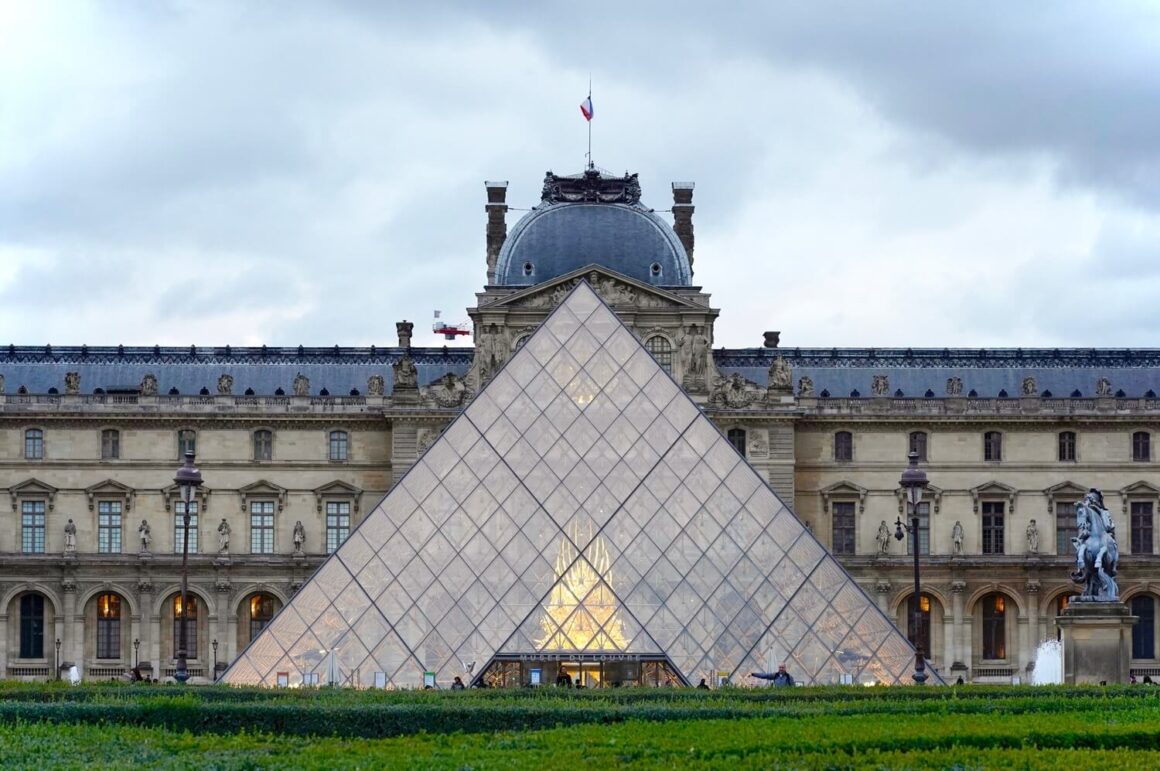
The Louvre’s journey from medieval fortress to world-renowned museum spans over eight centuries of French history. Built originally as a defensive structure in the late 12th century under King Philip II, remnants of its original foundation can still be explored in the museum’s basement, offering visitors a glimpse into medieval Paris.
Today, this cultural powerhouse houses an astounding collection of over 380,000 objects, with 35,000 works of art on display at any given time. The museum is divided into eight distinct curatorial departments, each representing different aspects of world culture and art history. From Egyptian Antiquities to Islamic Art, the collections span thousands of years of human creativity.
The museum’s most famous resident, Leonardo da Vinci’s Mona Lisa, draws millions of visitors annually, but equally significant masterpieces like the Venus de Milo and the Winged Victory of Samothrace showcase the breadth of human artistic achievement. I.M. Pei’s controversial yet now beloved glass pyramid, added in 1989, represents the museum’s ability to blend tradition with modernity.
Spanning an impressive 60,600 square meters, the Louvre’s galleries require strategic planning to explore effectively. The museum’s architecture itself tells the story of France’s royal history, with many rooms preserving their original decorative elements from various periods of palace life.
3. Notre Dame Cathedral
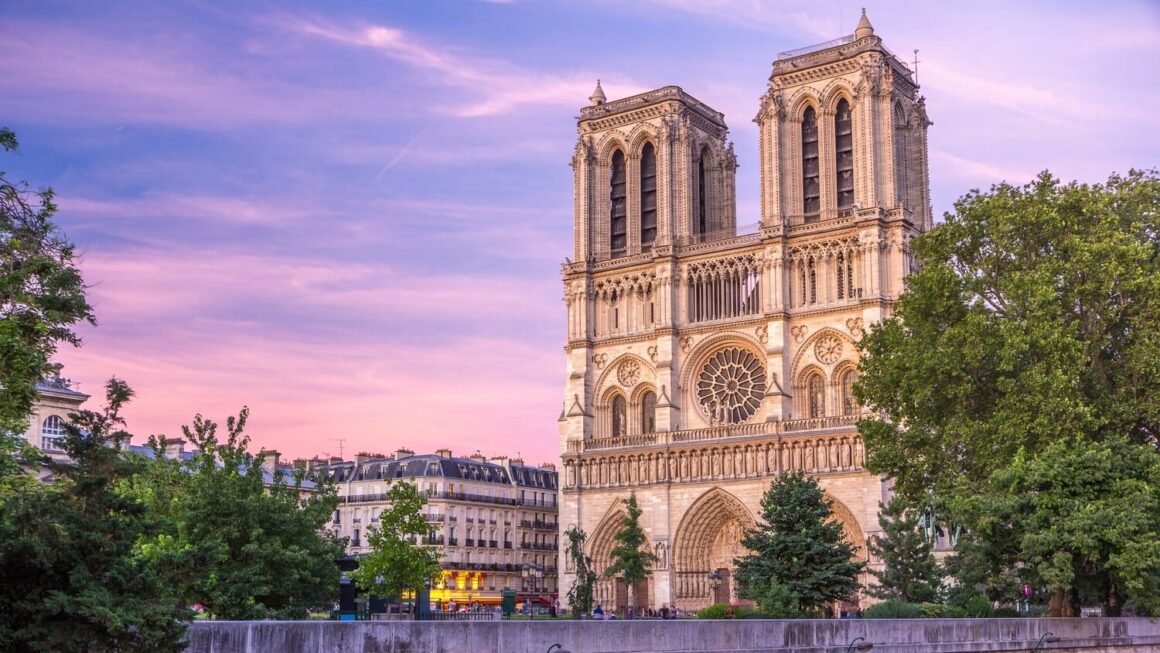
Notre Dame Cathedral represents the pinnacle of French Gothic architecture and eight centuries of Parisian history. Construction began in 1163 under Bishop Maurice de Sully, and the cathedral’s innovative design revolutionized medieval architecture with its pioneering use of flying buttresses and rib vaults.
The cathedral’s stunning rose windows remain masterpieces of medieval craftsmanship, telling biblical stories through intricate stained glass. Each window, measuring nearly 10 meters in diameter, demonstrates the technical and artistic achievements of 13th-century glassmakers. The cathedral’s gargoyles and chimeras, added during restoration in the 19th century, have become iconic symbols of gothic architecture.
Throughout its history, Notre Dame has witnessed numerous significant events, including Napoleon Bonaparte’s coronation in 1804 and the beatification of Joan of Arc. The cathedral’s historical importance extends beyond religious ceremonies – it has served as a symbol of Parisian resilience through revolution, war, and most recently, the devastating fire of 2019. Current restoration efforts aim to return this magnificent structure to its former glory by 2024.
4. Arc de Triomphe
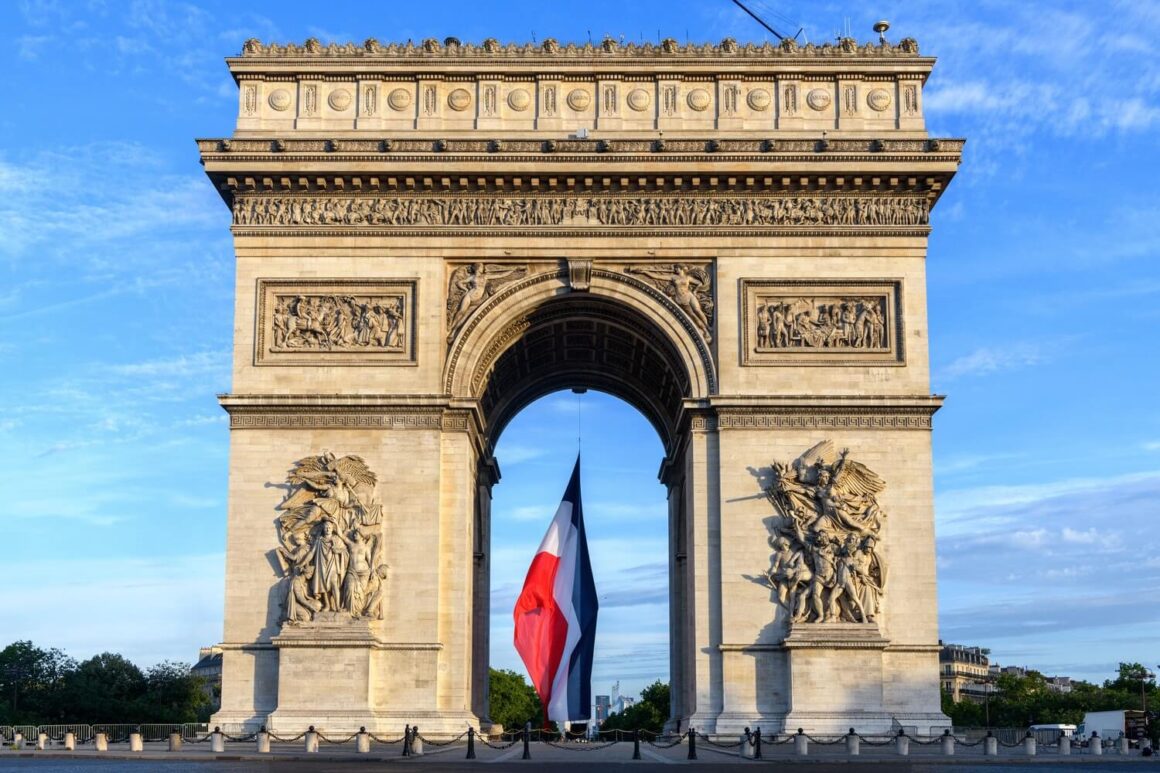
The Arc de Triomphe stands as a monumental tribute to French military achievement and sacrifice. Commissioned by Napoleon in 1806 following his victory at Austerlitz, this iconic structure was designed by architect Jean-François-Thérèse Chalgrin, drawing inspiration from the ancient Roman Arch of Titus.
Rising 50 meters high and 45 meters wide, the arch features intricate sculptural groups depicting key moments in French history. The most famous of these, “Le Départ de 1792” and “Le Triomphe de 1810,” celebrate French patriotism and military prowess. The inner walls bear the names of major victories and generals from the Revolutionary and Napoleonic wars.
Beneath the arch lies the Tomb of the Unknown Soldier, installed in 1921 to honor the unidentified dead of World War I. The eternal flame, rekindled every evening at 6:30 PM, serves as a powerful reminder of sacrifice and remembrance. Visitors who climb the 284 steps to the viewing platform are rewarded with one of Paris’s most spectacular panoramas, offering uninterrupted views down the twelve radiating avenues.
5. Sacré-Cœur Basilica
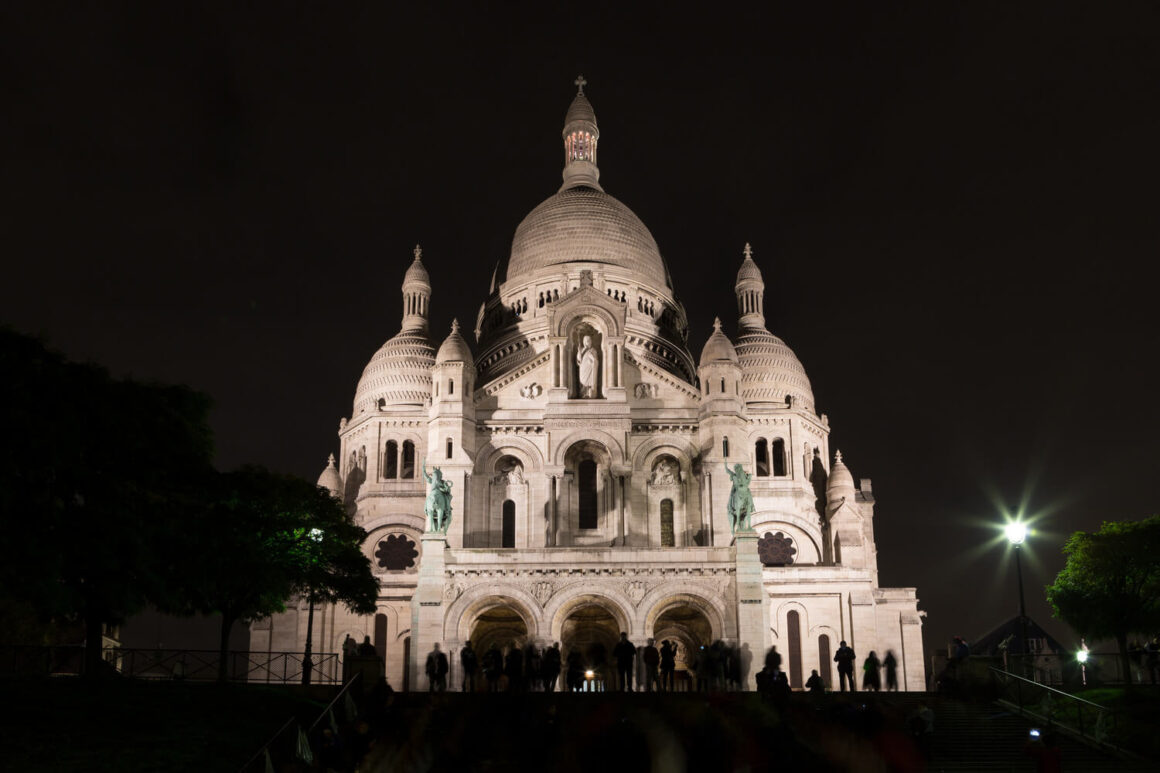
The Sacré-Cœur Basilica crowns the highest point in Paris, its gleaming white travertine façade standing sentinel over the city since its completion in 1914. Built between 1875 and 1914, the basilica arose as both an act of penance and hope following the Franco-Prussian War and the Paris Commune.
The basilica’s Romano-Byzantine architectural style sets it apart from Paris’s predominantly Gothic churches. Its distinctive white appearance comes from Château-Landon stones, which release calcite when exposed to rain, ensuring the building maintains its bright appearance despite the passage of time. The interior features one of the world’s largest mosaics, “The Triumph of the Sacred Heart of Jesus,” covering an impressive 475 square meters.
The site maintains its spiritual significance through perpetual adoration, which has continued uninterrupted since 1885. Visitors can climb to the dome for one of Paris’s most breathtaking panoramic views, stretching up to 30 kilometers on clear days. The basilica attracts millions of visitors annually, drawn by both its religious importance and architectural magnificence.
6. Champs-Élysées
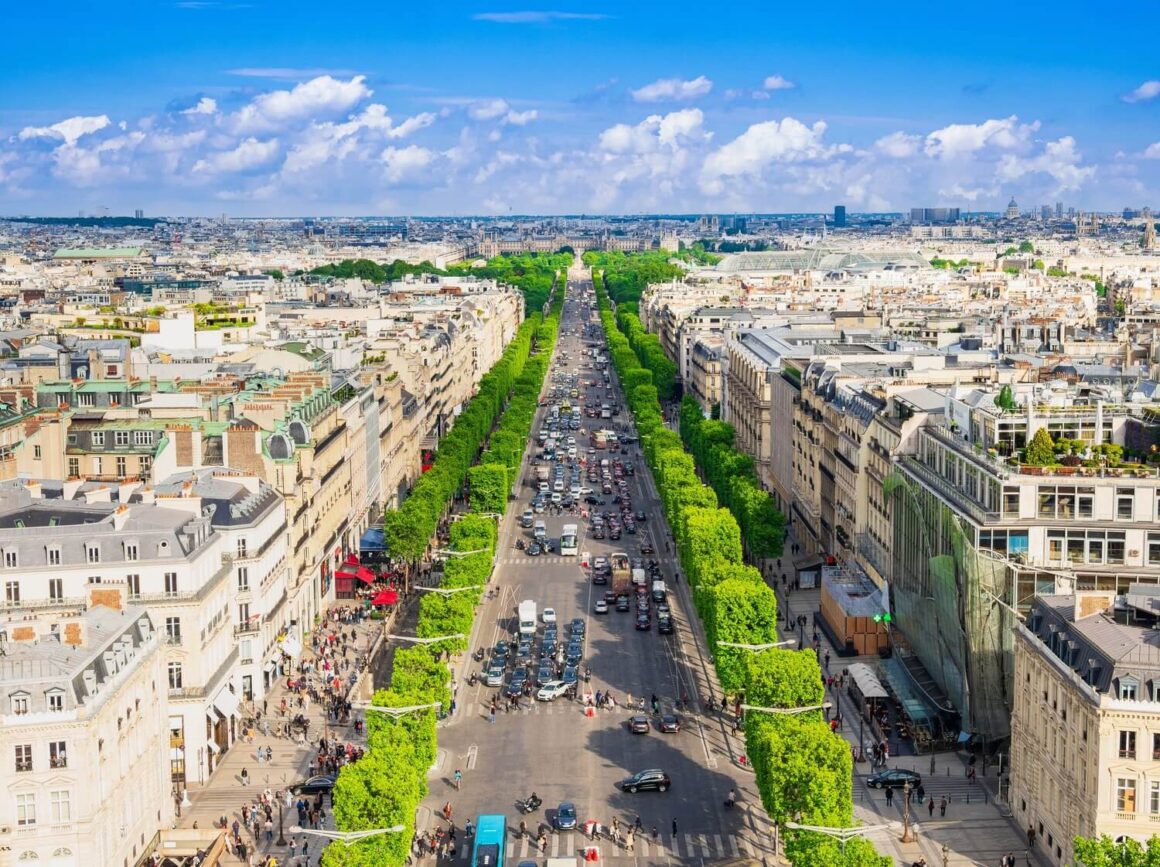
The Champs-Élysées, stretching nearly two kilometers from Place de la Concorde to the Arc de Triomphe, epitomizes Parisian grandeur and elegance. Originally designed in the 17th century by André Le Nôtre as an extension of the Tuileries Garden, this magnificent avenue takes its name from the Elysian Fields of Greek mythology, where heroes found their final rest.
The avenue’s evolution from a simple promenade to one of the world’s most famous commercial streets reflects Paris’s transformation through the centuries. Today, it hosts an impressive array of luxury boutiques, theaters, and cafés, while maintaining its historical significance as the site of major national celebrations and the final stage of the Tour de France.
Recent renovation plans aim to transform parts of the avenue into a more pedestrian-friendly space, adding green areas and reducing vehicle traffic. This modernization reflects the avenue’s continuing ability to adapt while maintaining its status as “the world’s most beautiful avenue.”
7. Palace of Versailles
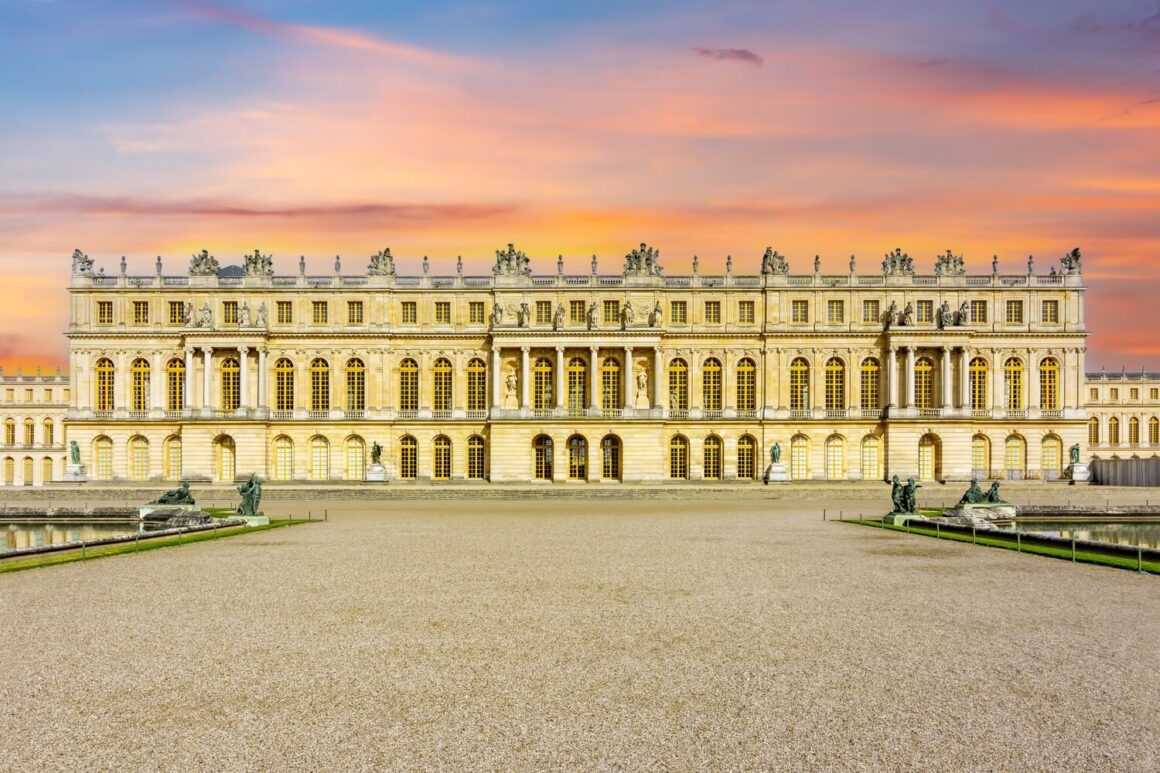
The Palace of Versailles represents the pinnacle of French royal ambition and architectural achievement. What began as a humble hunting lodge under Louis XIII transformed into the most magnificent royal residence in Europe under Louis XIV, the “Sun King.” The palace complex, with its 2,300 rooms, stands as a masterpiece of French Baroque architecture.
The Hall of Mirrors, the palace’s most famous gallery, features 357 mirrors reflecting the light from 17 arcaded windows, creating a dazzling display of illumination and grandeur. This spectacular hall witnessed numerous historic events, including the signing of the Treaty of Versailles in 1919.
The palace gardens, designed by André Le Nôtre, are equally impressive. Covering nearly 2,000 acres, they feature geometrically aligned terraces, fountains, and sculptures that create a harmonious blend of nature and artistic vision. The Grand Canal, stretching 1.6 kilometers, reflects the sky and surrounding landscape, adding to the gardens’ magnificent perspectives.
8. Montmartre
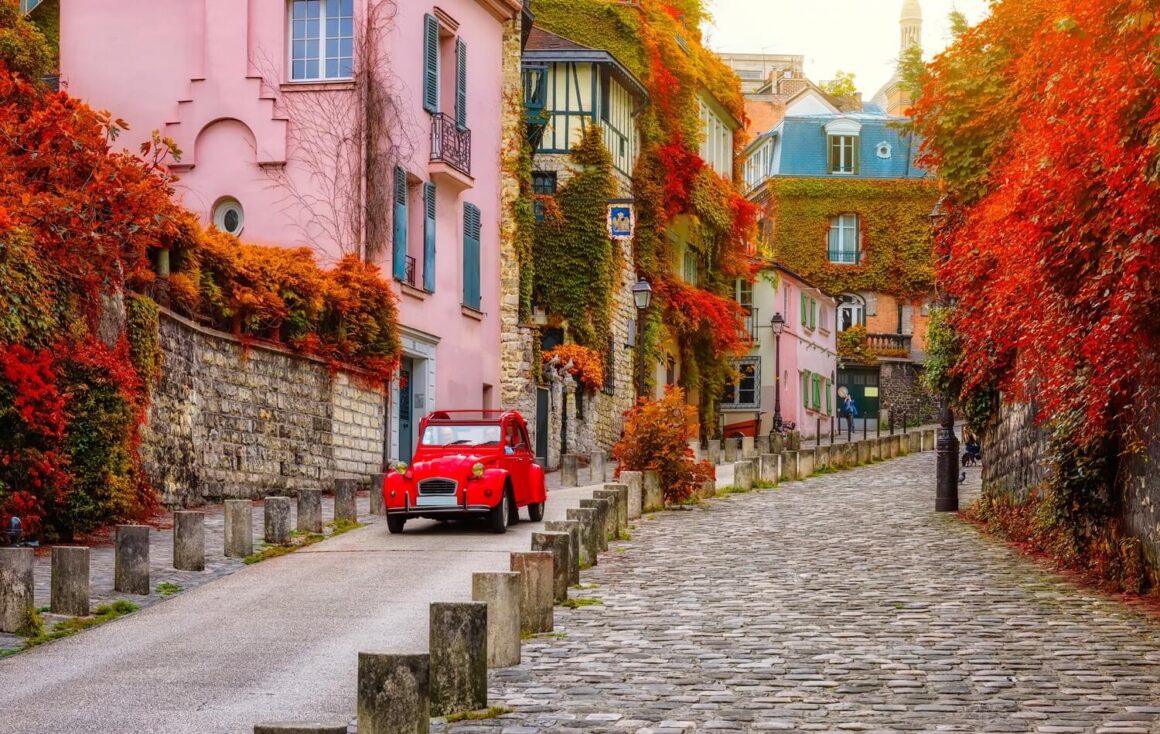
Montmartre’s storied history as Paris’s artistic heart comes alive in its winding cobblestone streets and village-like atmosphere. Perched atop the highest hill in Paris, this historic district has been a hub of creativity and bohemian life since the late 19th century, when it attracted legendary artists including Picasso, Van Gogh, and Toulouse-Lautrec.
The district’s crown jewel, the Sacré-Cœur Basilica, dominates the skyline, but Montmartre’s true character lies in its intimate squares and hidden corners. The Place du Tertre, once the heart of the medieval village, continues the artistic tradition with painters setting up their easels daily to capture the essence of Paris life.
Lesser-known treasures include the district’s remaining vineyard, Clos Montmartre, which produces small batches of wine annually. The area’s famous cabarets, including the iconic Moulin Rouge, recall the neighborhood’s vibrant entertainment history. Wandering through Montmartre’s streets reveals charming vistas, historic windmills, and quiet corners that feel unchanged by time.
9. Panthéon
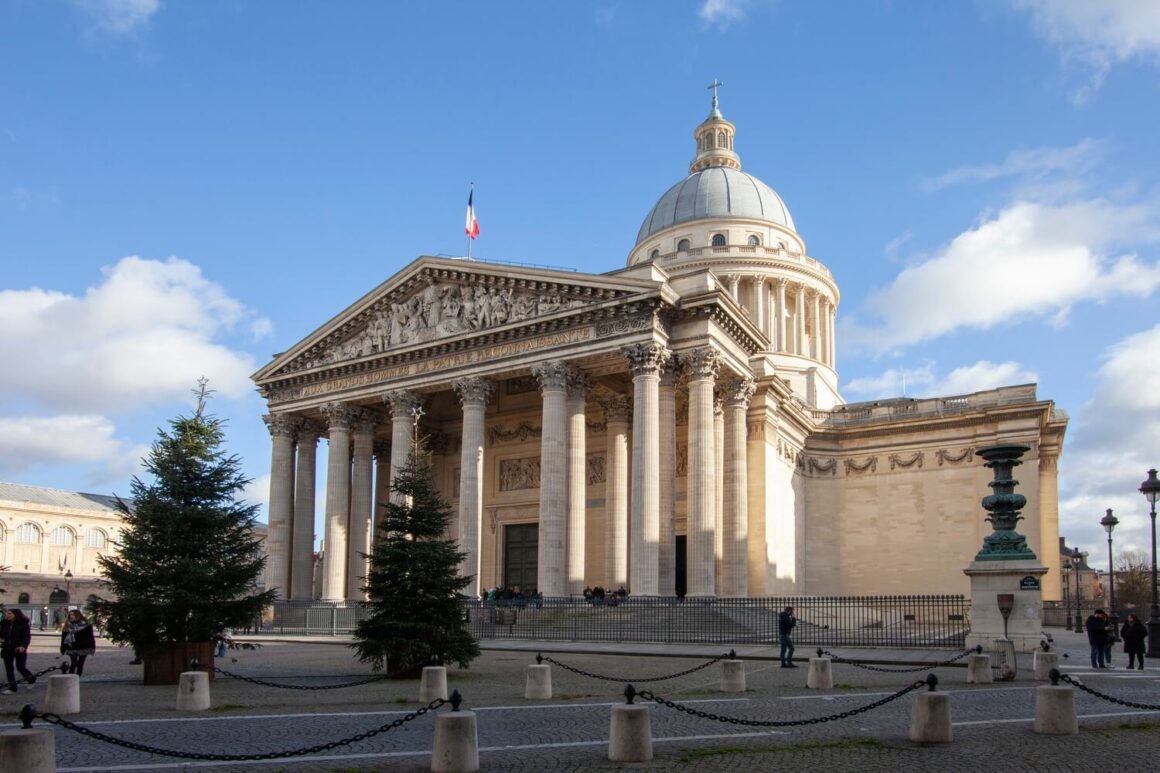
The Panthéon stands as a masterpiece of neoclassical architecture and a tribute to French cultural achievement. Originally conceived as a church dedicated to Saint Genevieve, Paris’s patron saint, this magnificent structure was transformed during the French Revolution into a mausoleum for France’s most distinguished citizens.
The building’s Greek cross plan and massive dome, inspired by Rome’s Pantheon, showcase architect Jacques-Germain Soufflot’s genius. The interior features stunning frescoes depicting scenes from French history and Saint Genevieve’s life. The building’s scientific significance is demonstrated by Foucault’s pendulum, which has hung here since 1851, providing visual proof of Earth’s rotation.
The crypt houses the remains of notable French figures including Voltaire, Rousseau, Victor Hugo, and Marie Curie, making it a powerful symbol of French intellectual and cultural achievement. Each tomb tells a story of individual contribution to French society, from literature and science to politics and social justice.
10. Les Invalides
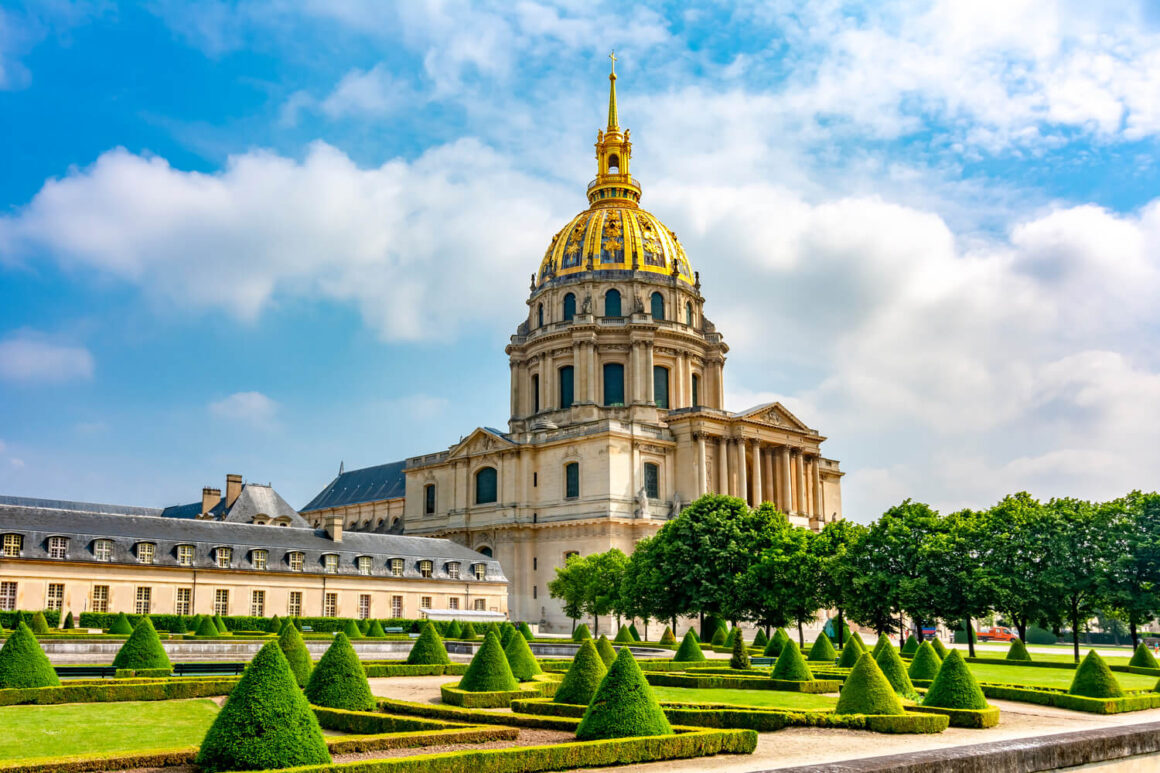
Les Invalides exemplifies French classical architecture and military history. Commissioned by Louis XIV in 1670, this vast complex initially served as a hospital and retirement home for wounded soldiers. The site spans 15 courtyards, with the impressive Cour d’Honneur still used for military ceremonies today.
The complex’s most striking feature is the golden dome of the Église du Dôme, designed by Jules Hardouin-Mansart. This architectural masterpiece houses Napoleon Bonaparte’s tomb, where the emperor’s remains rest in six nested coffins beneath the magnificent dome. The tomb’s location and design reflect Napoleon’s lasting impact on French history and national identity.
Today, Les Invalides houses the Musée de l’Armée, containing one of the world’s largest military history collections. From medieval armor to World War II artifacts, the museum chronicles France’s military evolution. The site continues its original mission by providing services to veterans while serving as a major cultural institution.
11. Pont Neuf
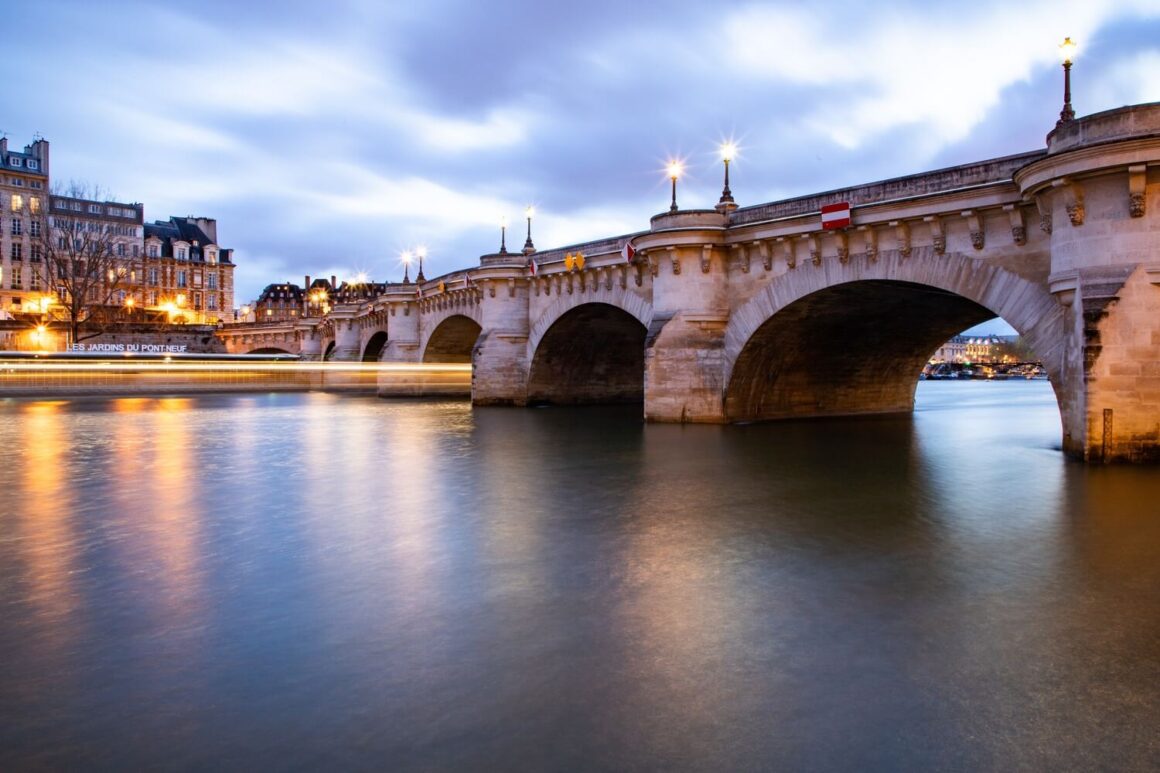
The Pont Neuf, ironically Paris’s oldest standing bridge, represents a pivotal moment in urban design history. Constructed between 1578 and 1607, it broke with tradition by eliminating the houses typically built on bridges and introducing sidewalks for pedestrian safety. This innovative design allowed unprecedented views of the Seine and surrounding landmarks.
The bridge’s 12 arches and 381 mascarons (grotesque faces) make it a unique architectural monument. Each mascaron is different, depicting various mythological figures and symbolic representations. The bridge connects the Left Bank, Right Bank, and Île de la Cité, making it a crucial piece of Paris’s urban fabric.
Recent restorations, including a major project in 2007 for its 400th anniversary, have preserved the bridge’s historical character while ensuring its continued service to modern Paris. The Point Zero of Paris, marking the official center of the city, lies nearby, making the Pont Neuf a literal and symbolic heart of the capital.
12. Place de la Concorde
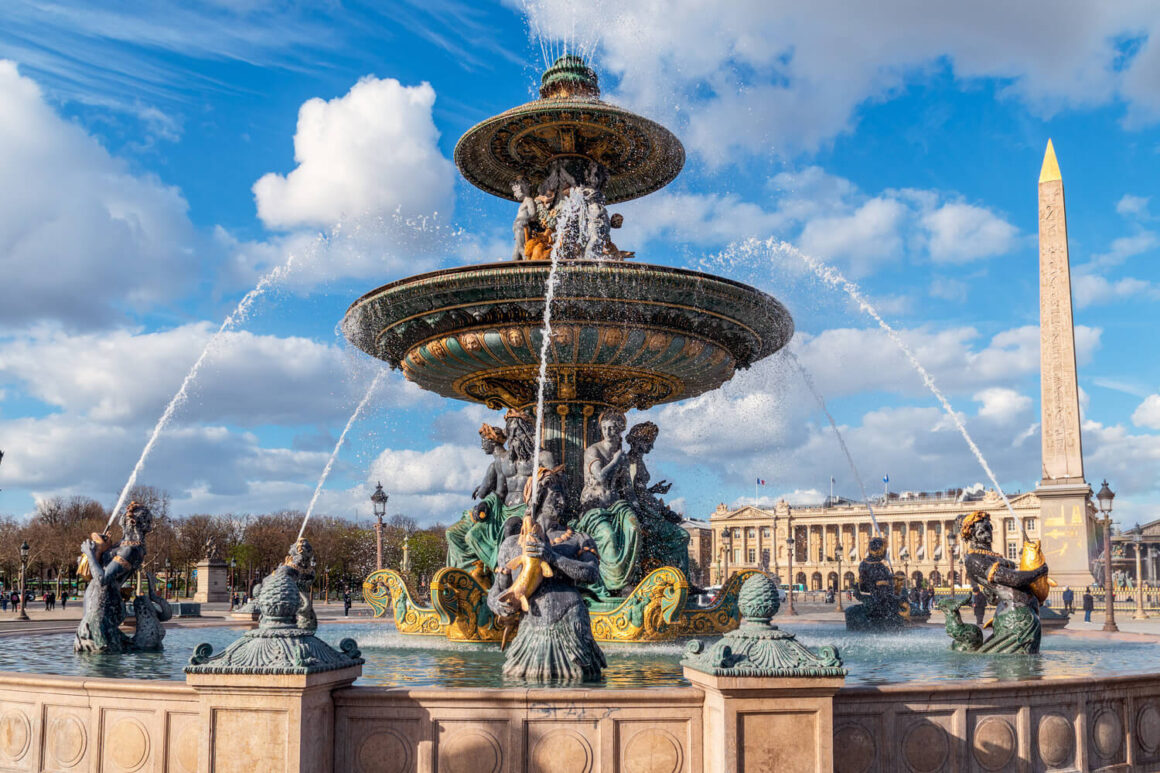
The Place de la Concorde, Paris’s largest public square, embodies the city’s dramatic history. Originally named Place Louis XV in 1755, it was designed by Ange-Jacques Gabriel as a showcase of royal power. During the French Revolution, it became Place de la Révolution and the site of numerous executions by guillotine, including those of Louis XVI and Marie Antoinette.
The square’s centerpiece, the 3,300-year-old Luxor Obelisk, arrived from Egypt in 1836, marking a new chapter in the square’s history. Its placement was carefully calculated to align with the Champs-Élysées and create one of Paris’s great historical axes. The two monumental fountains, inspired by Rome’s Piazza San Pietro, feature maritime themes and add both beauty and historical significance to the space.
Surrounded by exemplary 18th-century buildings like the Hôtel de la Marine and Hôtel de Crillon, the square represents the height of French architectural achievement. Its location, connecting the Tuileries Garden with the Champs-Élysées, makes it a crucial link in Paris’s historical development.
13. Musée d’Orsay
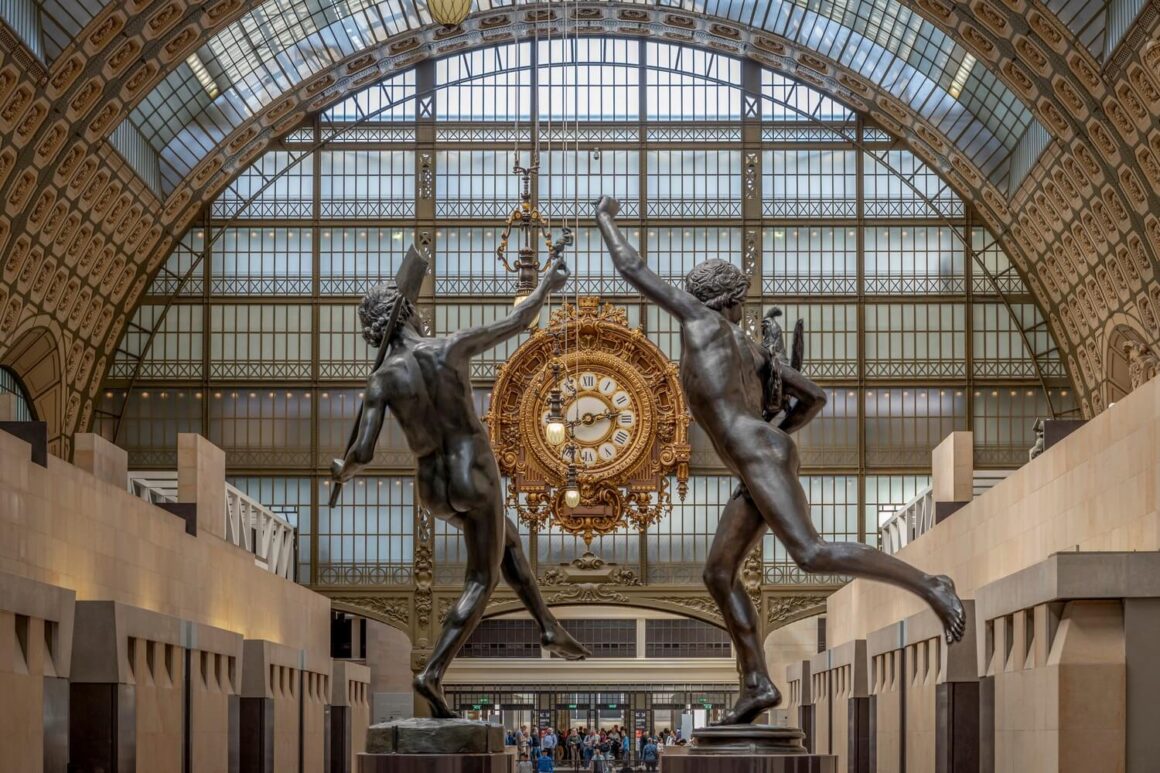
The Musée d’Orsay represents a triumphant marriage of industrial architecture and artistic heritage. Housed in the former Gare d’Orsay railway station, built for the 1900 Universal Exhibition, the museum’s transformation from transportation hub to cultural center exemplifies creative architectural repurposing.
The museum’s collection fills a crucial gap in French art history, focusing on works created between 1848 and 1914. Its unparalleled collection of Impressionist and Post-Impressionist masterpieces includes iconic works by Monet, Van Gogh, Renoir, and Degas. The building’s original features, including its magnificent clock and soaring metal and glass roof, create a unique backdrop for the artworks.
Visitors can trace the evolution of modern art through carefully curated galleries, from academic paintings to the birth of modernism. The museum’s recent renovations have enhanced its spaces while preserving the building’s industrial character, making it a testament to both 19th-century innovation and contemporary museum design.
14. Centre Pompidou
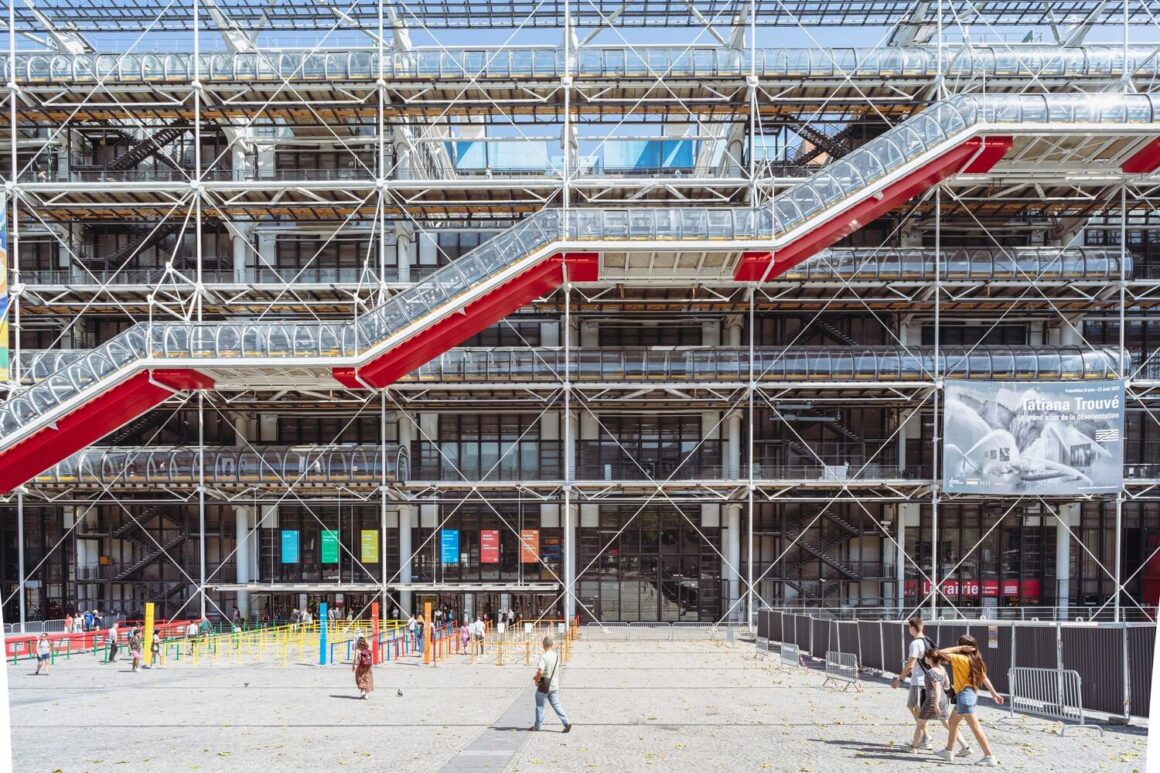
The Centre Pompidou revolutionized museum architecture when it opened in 1977. Designed by architects Renzo Piano and Richard Rogers, its “inside-out” aesthetic, with exterior escalators and color-coded mechanical systems, challenged traditional concepts of cultural institution design.
Housing Europe’s largest modern art collection, the Centre features over 100,000 works, including pieces by Picasso, Kandinsky, and numerous contemporary artists. The building’s flexible interior spaces allow for dynamic exhibition arrangements and multidisciplinary programming, fulfilling President Georges Pompidou’s vision of a cultural center that democratizes art.
Beyond its art collection, the Centre houses a vast public library, spaces for music and industrial design, and hosts regular debates and performances. The rooftop restaurant offers panoramic views of Paris, while the piazza in front has become a vibrant public space for street performers and cultural gatherings.
15. Moulin Rouge
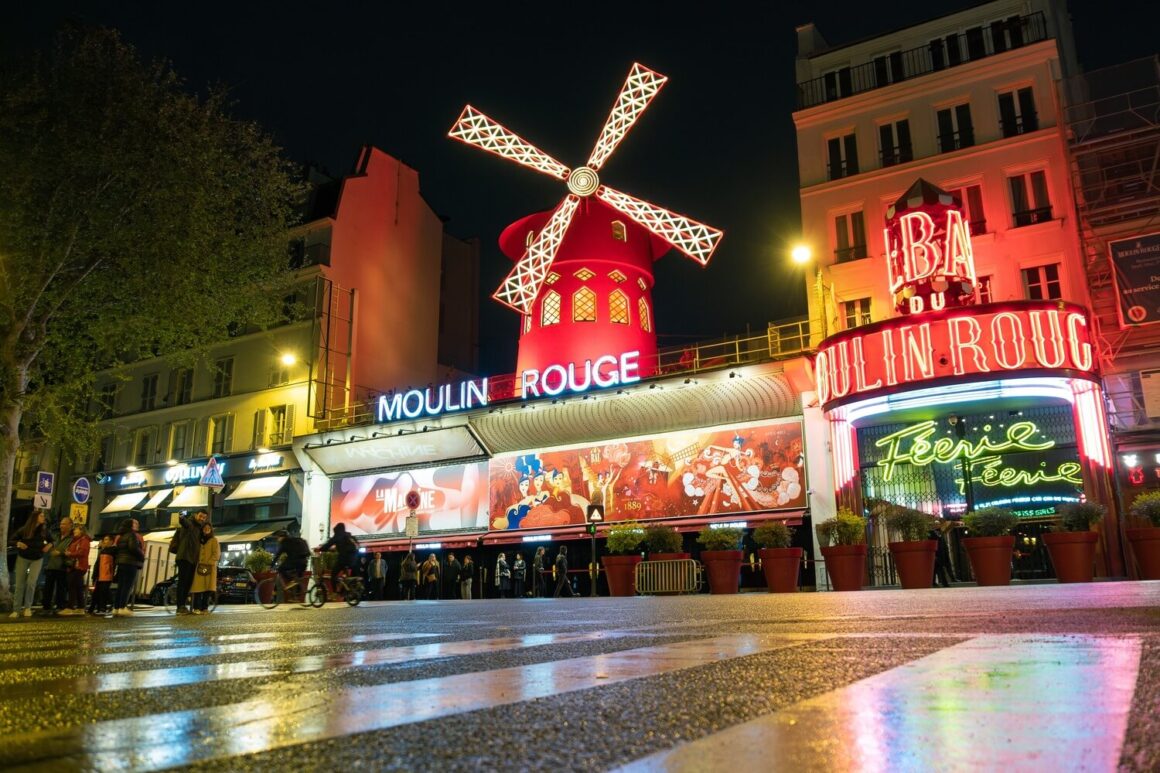
Since its opening in 1889, the Moulin Rouge has embodied Paris’s reputation for sophisticated entertainment. Founded by Joseph Oller and Charles Zidler, this legendary cabaret quickly became the birthplace of the modern can-can dance, which evolved from a working-class dance to a professional artistic performance.
The venue’s iconic red windmill exterior has become a symbol of Parisian nightlife, while its interior maintains the lavish decoration that has characterized it since the Belle Époque. Despite setbacks, including a devastating fire in 1915, the Moulin Rouge has continuously reinvented itself while preserving its historical character.
Today’s performances continue the tradition of spectacular entertainment, featuring elaborate costumes, skilled dancers, and modern interpretations of classic routines. The cabaret’s history intertwines with significant artists and performers, making it both a tourist destination and a living piece of Paris’s cultural heritage.
16. Sainte-Chapelle
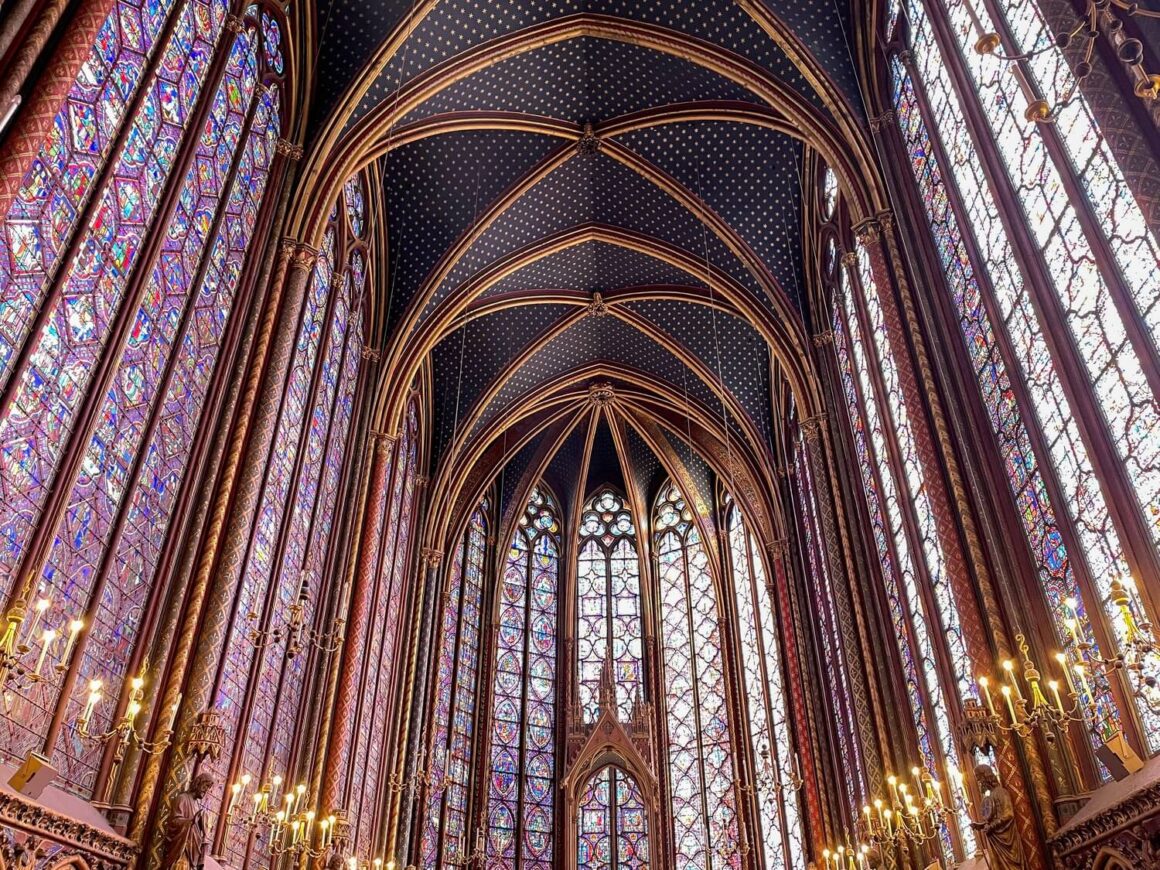
Sainte-Chapelle represents the pinnacle of Rayonnant Gothic architecture and medieval craftsmanship. Built between 1242 and 1248 under King Louis IX to house precious religious relics, including the Crown of Thorns, the chapel demonstrates the heights of 13th-century architectural and artistic achievement.
The chapel’s most remarkable feature is its collection of 15 stained glass windows, covering 600 square meters and depicting 1,113 biblical scenes. The upper chapel’s walls appear to float between the stained glass panels, creating an ethereal atmosphere of colored light. The recently restored windows provide an unparalleled example of medieval glazing techniques and religious storytelling.
The chapel’s two-level design reflects medieval social hierarchy: the lower chapel served palace staff, while the upper chapel was reserved for the king and court. Despite damage during the French Revolution, much of the original stained glass survives, making Sainte-Chapelle one of the most complete and impressive medieval interiors in existence.
17. Palais Garnier
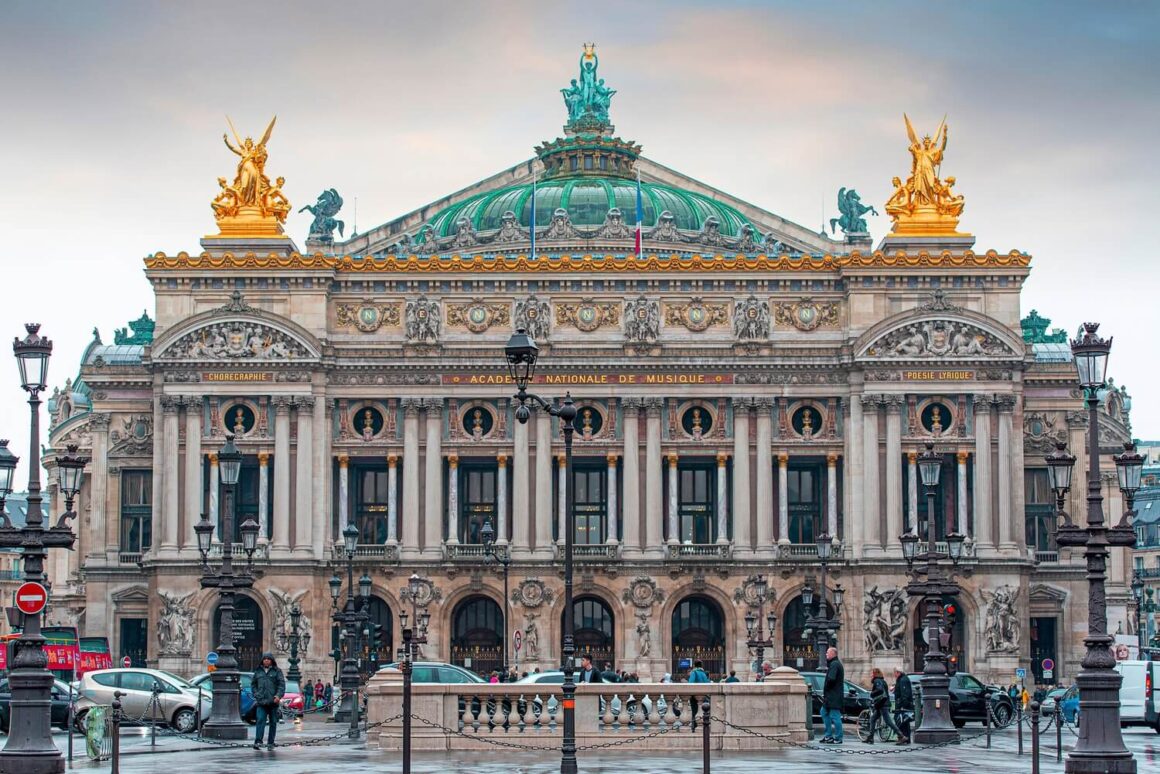
The Palais Garnier stands as the epitome of Second Empire architectural opulence. Commissioned by Napoleon III and designed by Charles Garnier, this opera house combines Renaissance and Baroque elements to create a uniquely French style. Completed in 1875, it quickly became a symbol of Paris’s cultural sophistication.
The building’s grand marble staircase and magnificent foyer showcase the finest 19th-century decorative arts. The auditorium, crowned by Marc Chagall’s ceiling painting, features a seven-ton bronze and crystal chandelier that inspired a crucial scene in “The Phantom of the Opera.” The hidden underground lake, part of the building’s innovative hydraulic stage machinery system, added to the opera house’s mystique.
Today, the Palais Garnier primarily hosts ballet performances while continuing to captivate visitors with its architectural grandeur. The building’s recent restoration efforts have preserved its historic character while adapting to modern performance requirements.
18. Catacombs of Paris
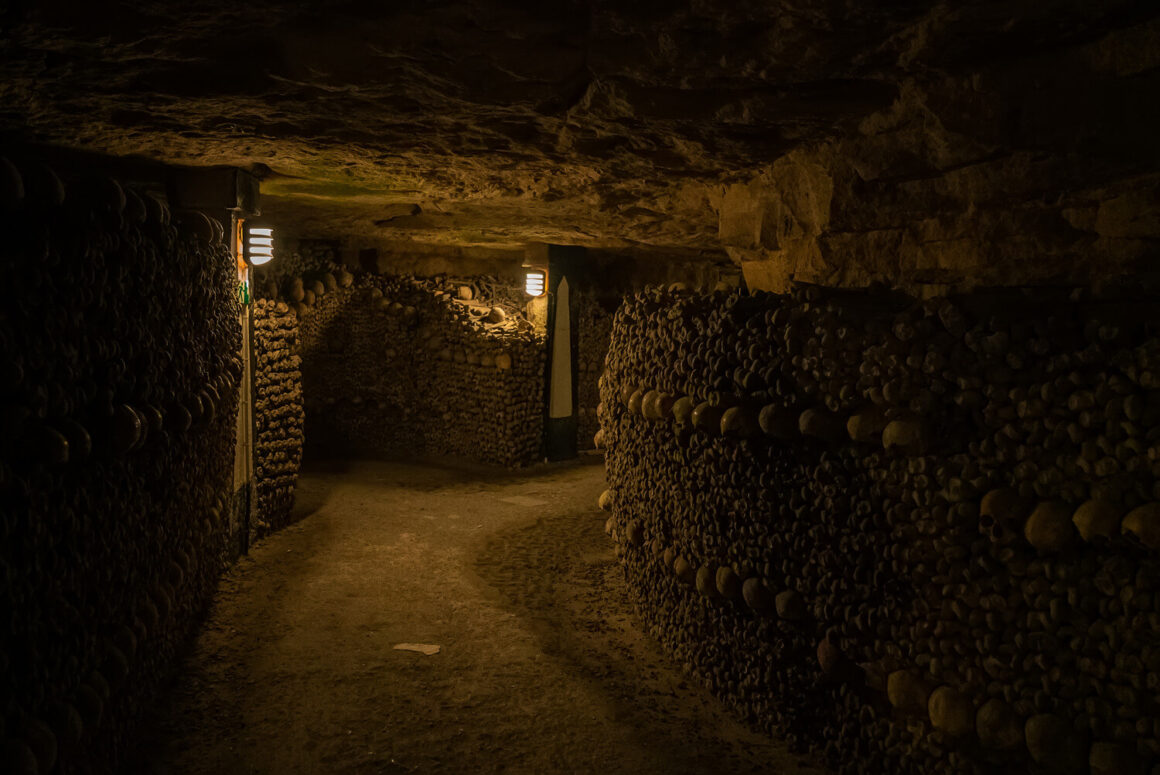
The Paris Catacombs offer a unique and sobering perspective on the city’s history. Created in the late 18th century to address overcrowded cemeteries, these former limestone quarries now house the remains of over six million Parisians, arranged in elaborate patterns that combine practicality with macabre artistry.
Descending 65 feet underground, visitors follow a 2-kilometer route through tunnels lined with carefully arranged bones and skulls. The site features philosophical inscriptions and memorial plaques that reflect on mortality and human existence. During World War II, these tunnels served as Resistance hideouts, adding another layer to their historical significance.
The Catacombs represent both practical urban planning and a unique approach to memorializing the dead. The site’s enduring popularity as a tourist attraction speaks to its power to provoke reflection on mortality while providing insights into Paris’s geological and social history.
19. Place des Vosges
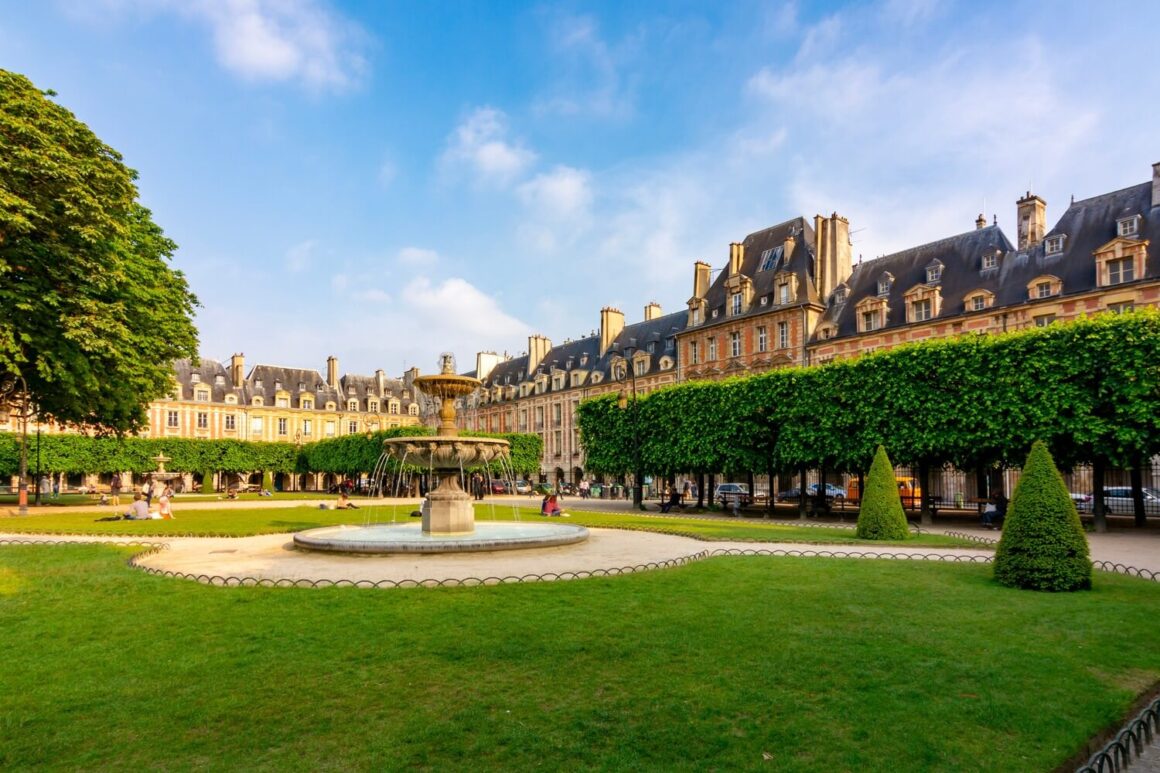
The Place des Vosges, Paris’s oldest planned square, epitomizes early 17th-century urban design. Built between 1605 and 1612 under Henry IV, the square’s perfect symmetry and harmonious architecture set standards for European city planning that influenced developments across the continent.
The square features 36 identical pavilions of red brick and stone, connected by vaulted arcades that house art galleries, shops, and cafés. The central garden, with its fountains and statue of Louis XIII, provides a peaceful retreat in the heart of the Marais district. Notable residents have included Victor Hugo, whose former apartment is now a museum.
